Digs & Discoveries
What's in a Norse Name?
By MARLEY BROWN
Friday, October 09, 2020
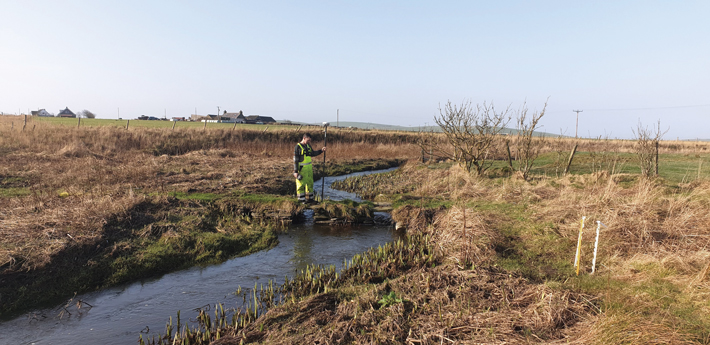
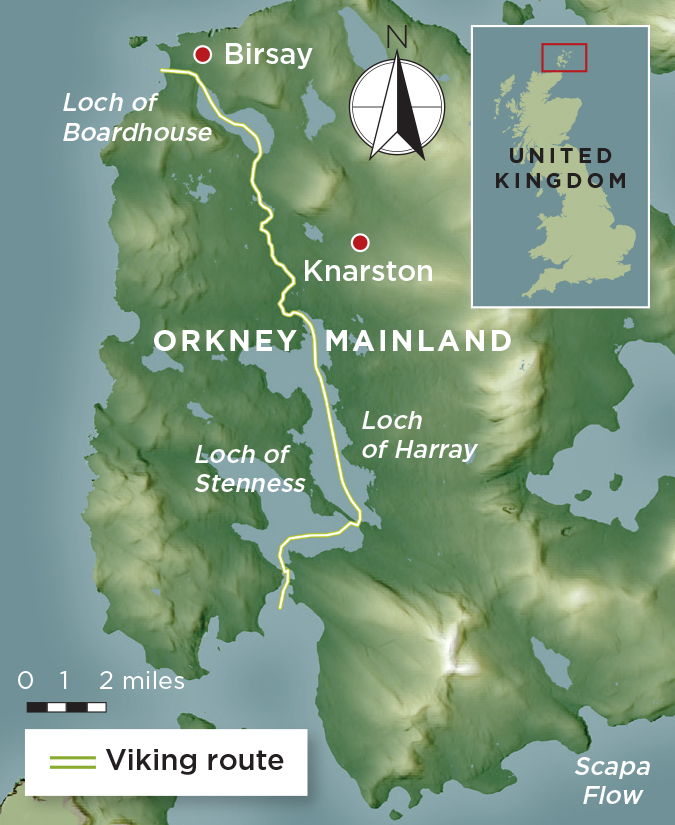 Intrigued by a number of nautical-themed Norse place-names for inland locations on the Scottish island Orkney, researchers have identified a series of lost Viking waterways that ran across the island, connecting the North Atlantic with the Scapa Flow. Among the curiously named spots is Knarston, which comes from the Old Norse knarrar staðir and denotes a farm where transport vessels are moored. Using remote sensing and environmental data from sediment samples, the team mapped several infilled channels that once connected farmsteads around the island’s Loch of Harray to the stronghold of Viking earls at Birsay on the northwest coast.
Intrigued by a number of nautical-themed Norse place-names for inland locations on the Scottish island Orkney, researchers have identified a series of lost Viking waterways that ran across the island, connecting the North Atlantic with the Scapa Flow. Among the curiously named spots is Knarston, which comes from the Old Norse knarrar staðir and denotes a farm where transport vessels are moored. Using remote sensing and environmental data from sediment samples, the team mapped several infilled channels that once connected farmsteads around the island’s Loch of Harray to the stronghold of Viking earls at Birsay on the northwest coast.
Environmental scientist Richard Bates of the University of St. Andrews says that farmers would have been able to trade and transport regular tribute to Birsay without having to brave Orkney’s treacherous coastal waters. “Perhaps I’ve come home for the winter and I can get my boat right up close to where I live, get it repaired, and get goods on and off easily,” Bates says. “The waters around Orkney are very difficult, even at the best of times, so if you can travel inland on a smaller craft, that’s a much easier option.”
Piggy Playthings
By BENJAMIN LEONARD
Friday, October 09, 2020
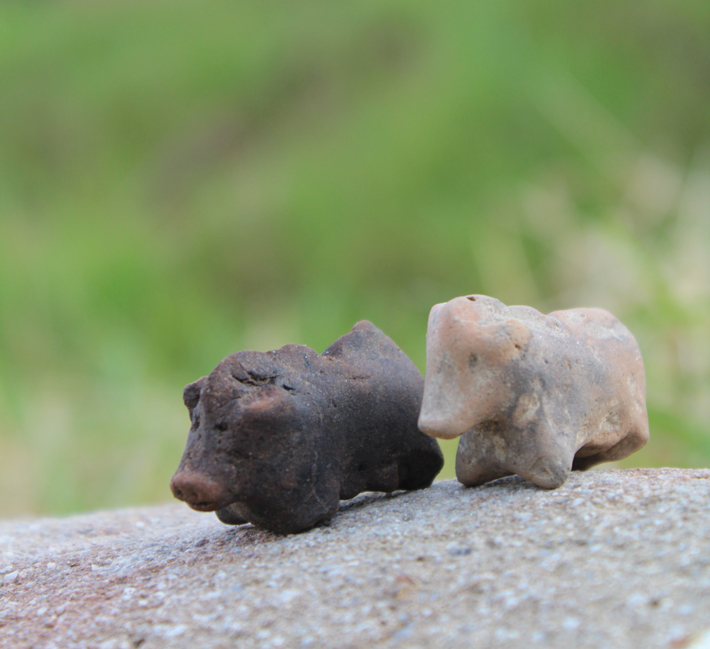 Researchers excavating a Bronze Age hillfort in Maszkowice, Poland, have unearthed two clay pig figurines in a house along the settlement’s defensive wall. Dating to some 3,500 years ago, the 1.7-inch trinkets were likely either toys or sacred objects. “There are important similarities between religious ritual and child’s play,” says archaeologist Marcin S. Przybyła of Jagiellonian University. “They both pretend something, reenact a story.” Regardless of the figurines’ exact use, he says, swine were clearly crucial to local subsistence. Pig remains comprise up to one-fifth of the animal bones recovered from the site’s Early Bronze Age levels.
Researchers excavating a Bronze Age hillfort in Maszkowice, Poland, have unearthed two clay pig figurines in a house along the settlement’s defensive wall. Dating to some 3,500 years ago, the 1.7-inch trinkets were likely either toys or sacred objects. “There are important similarities between religious ritual and child’s play,” says archaeologist Marcin S. Przybyła of Jagiellonian University. “They both pretend something, reenact a story.” Regardless of the figurines’ exact use, he says, swine were clearly crucial to local subsistence. Pig remains comprise up to one-fifth of the animal bones recovered from the site’s Early Bronze Age levels.
Paleolithic Bedtime
By ZACH ZORICH
Friday, October 09, 2020
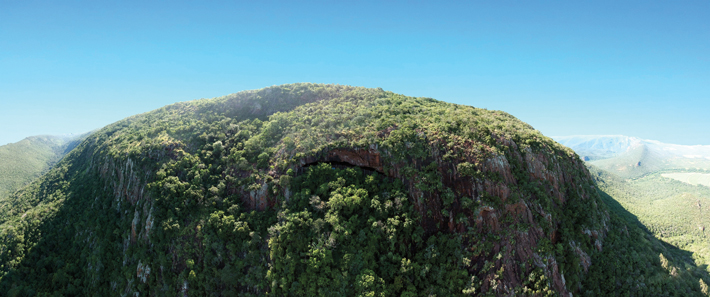
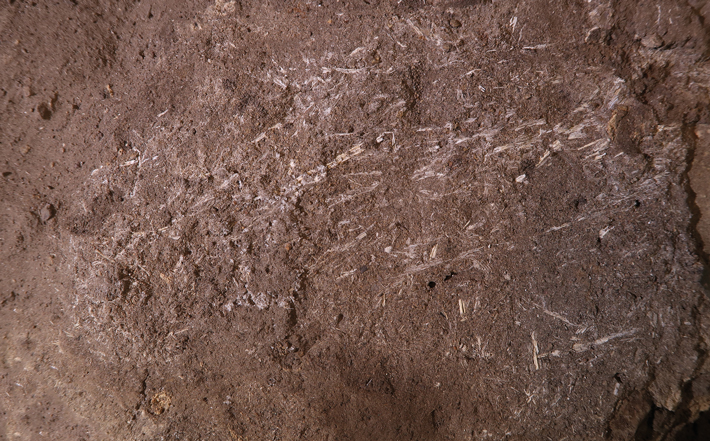 The people living in South Africa’s Border Cave up to 200,000 years ago knew how to make a cozy home. Excavations that took place between 2015 and 2019 have revealed that the cave’s residents slept on bedding that was made by piling broad-leafed grass on top of a layer of ash from the many fireplaces within the cave. The ash may have kept crawling insects from disturbing sleepers, says Lyn Wadley of the University of the Witwatersrand. Wadley believes that this type of bedding was very common in the distant past, but that it rarely survives in the archaeological record. The research team removed layers of the cave’s sediment in blocks and excavated them in the lab, which enabled them to examine their contents under a microscope. This meticulous approach revealed tiny pieces of ash and plant fibers that made up the bedding used by the cave dwellers between 200,000 and 35,000 years ago.
The people living in South Africa’s Border Cave up to 200,000 years ago knew how to make a cozy home. Excavations that took place between 2015 and 2019 have revealed that the cave’s residents slept on bedding that was made by piling broad-leafed grass on top of a layer of ash from the many fireplaces within the cave. The ash may have kept crawling insects from disturbing sleepers, says Lyn Wadley of the University of the Witwatersrand. Wadley believes that this type of bedding was very common in the distant past, but that it rarely survives in the archaeological record. The research team removed layers of the cave’s sediment in blocks and excavated them in the lab, which enabled them to examine their contents under a microscope. This meticulous approach revealed tiny pieces of ash and plant fibers that made up the bedding used by the cave dwellers between 200,000 and 35,000 years ago.
Laurens' Last Stand
By BENJAMIN LEONARD
Friday, October 09, 2020
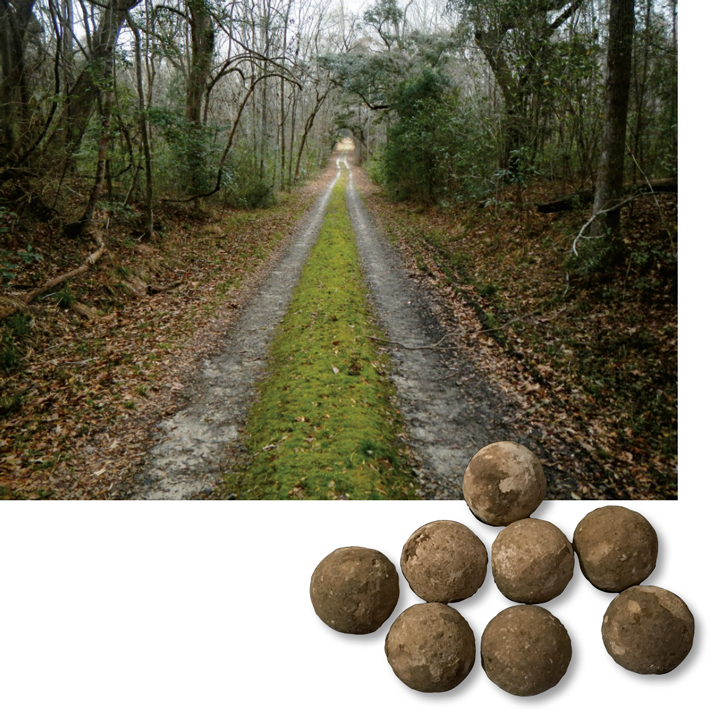 On the morning of August 27, 1782, Continental forces led by John Laurens—aide-de-camp to General George Washington and friend of Alexander Hamilton—clashed with 140 British soldiers in a minor skirmish on the shores of the Combahee River, about 50 miles south of Charleston, South Carolina. Two days earlier, General Mordecai Gist had prevented foraging British troops and their 18 vessels from landing on the east side of Combahee Ferry, 12 miles upriver of the battle site. On the evening of August 26, Gist dispatched Laurens, along with 40 men and a howitzer, to launch a surprise attack at a spot called Tar Bluff. “For Laurens, Tar Bluff, with its 20-foot elevation overlooking the river, was the best tactical location for the placement of his howitzer,” says archaeologist Mike Yianopoulos of the South Carolina Battleground Preservation Trust.
On the morning of August 27, 1782, Continental forces led by John Laurens—aide-de-camp to General George Washington and friend of Alexander Hamilton—clashed with 140 British soldiers in a minor skirmish on the shores of the Combahee River, about 50 miles south of Charleston, South Carolina. Two days earlier, General Mordecai Gist had prevented foraging British troops and their 18 vessels from landing on the east side of Combahee Ferry, 12 miles upriver of the battle site. On the evening of August 26, Gist dispatched Laurens, along with 40 men and a howitzer, to launch a surprise attack at a spot called Tar Bluff. “For Laurens, Tar Bluff, with its 20-foot elevation overlooking the river, was the best tactical location for the placement of his howitzer,” says archaeologist Mike Yianopoulos of the South Carolina Battleground Preservation Trust.
Having spotted Laurens’ column departing from Combahee Ferry with the howitzer, the British anticipated his plan and ambushed his contingent. In the ensuing battle, Laurens was killed, and the British captured the howitzer. With the aid of historical accounts and metal detectors, Yianopoulos and his team have now pinpointed the battle’s exact location. A crude map drawn by a British officer marks the battle lines between two creeks connected by a smaller creek, which the researchers identified in dense forest using lidar. “Mapping the coordinates of dropped and fired musket shot and cannon grapeshot then allowed us to graphically see the pattern of troop positions and movements through the battle,” Yianopoulos says.

Honoring the Dead
By JARRETT A. LOBELL
Friday, October 09, 2020
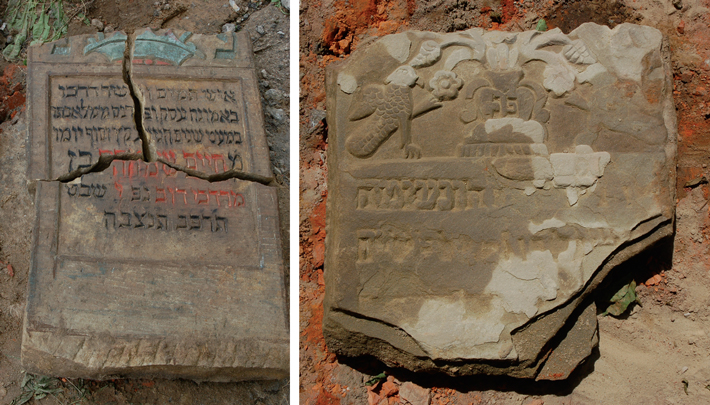
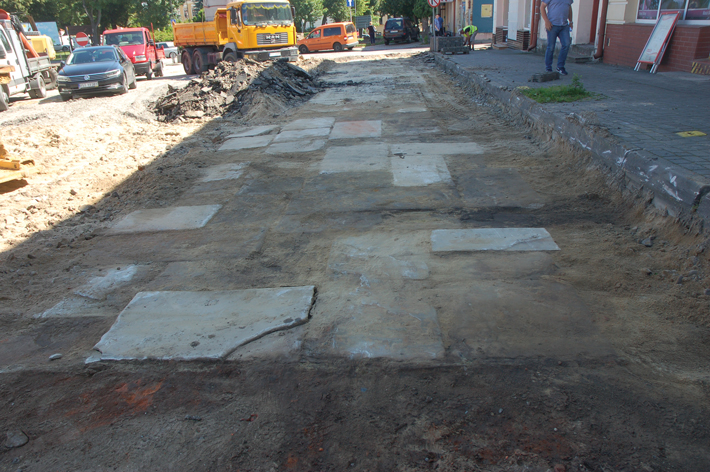 From the medieval period to the twentieth century, there was a thriving Jewish community in the Polish market town of Leżajsk, and beginning in 1635, its dead were buried in the town’s Jewish cemetery. But in 1939, the Wehrmacht occupied Leżajsk, deported its Jews to the Soviet Union, and began to destroy the cemetery. In recent months, during reconstruction of the town’s Market Square, many Jewish tombstones, or matzevot, have been found, some still bearing their painted gold and red lettering. “The only thing that saved the inscriptions and the polychrome was that they were buried facing down,” says archaeologist and regional monuments conservator Ewa Kedzierska. “I was really shocked. We expected maybe a few tombstones because some had been found during road renovation nearby, but no one expected there to be more than 150. Some are complete, others are in fragments. Some are modest, others have colorful inscriptions and beautiful carvings. They look wonderful.” By studying the inscriptions, Kedzierska hopes to learn more about Leżajsk’s former Jewish residents, their professions, and the roles they played in the greater community. According to Jewish custom, the matzevot cannot be put back into the ground, explains Kedzierska, and are thus now in the care of the Leżajsk city authorities, who, in consultation with the larger Jewish community, will decide how best to display them in a way that properly honors the dead.
From the medieval period to the twentieth century, there was a thriving Jewish community in the Polish market town of Leżajsk, and beginning in 1635, its dead were buried in the town’s Jewish cemetery. But in 1939, the Wehrmacht occupied Leżajsk, deported its Jews to the Soviet Union, and began to destroy the cemetery. In recent months, during reconstruction of the town’s Market Square, many Jewish tombstones, or matzevot, have been found, some still bearing their painted gold and red lettering. “The only thing that saved the inscriptions and the polychrome was that they were buried facing down,” says archaeologist and regional monuments conservator Ewa Kedzierska. “I was really shocked. We expected maybe a few tombstones because some had been found during road renovation nearby, but no one expected there to be more than 150. Some are complete, others are in fragments. Some are modest, others have colorful inscriptions and beautiful carvings. They look wonderful.” By studying the inscriptions, Kedzierska hopes to learn more about Leżajsk’s former Jewish residents, their professions, and the roles they played in the greater community. According to Jewish custom, the matzevot cannot be put back into the ground, explains Kedzierska, and are thus now in the care of the Leżajsk city authorities, who, in consultation with the larger Jewish community, will decide how best to display them in a way that properly honors the dead.
Advertisement
Advertisement
IN THIS ISSUE
Digs & Discoveries
Our Coastal Origins
Off the Grid
A Day by the Rhone
Painful Past
Miniature Masterpieces
Precision Instruments
Ship of Plenty
A Tale of Two Pipes
To Reach the Gods
Bronze Age Keepsakes
Honoring the Dead
Paleolithic Bedtime
Laurens' Last Stand
Piggy Playthings
What's in a Norse Name?
Around the World
Poison projectiles, Cortés’ Mexico City abode, Peruvian pelican fertilizer, and solving a Crusader mystery
Artifact
Turning over an old leaf
Advertisement

Recent Issues
-
 May/June 2024
May/June 2024
-
 March/April 2024
March/April 2024
-
 January/February 2024
January/February 2024
-
 November/December 2023
November/December 2023
-
 September/October 2023
September/October 2023
-
 July/August 2023
July/August 2023
-
 May/June 2023
May/June 2023
-
 March/April 2023
March/April 2023
-
 January/February 2023
January/February 2023
-
 November/December 2022
November/December 2022
-
 September/October 2022
September/October 2022
-
 July/August 2022
July/August 2022
-
 May/June 2022
May/June 2022
-
 March/April 2022
March/April 2022
-
 January/February 2022
January/February 2022
-
 November/December 2021
November/December 2021
-
 September/October 2021
September/October 2021
-
 July/August 2021
July/August 2021
-
 May/June 2021
May/June 2021
-
 March/April 2021
March/April 2021
-
 January/February 2021
January/February 2021
-
 November/December 2020
November/December 2020
-
 September/October 2020
September/October 2020
-
 July/August 2020
July/August 2020
-
 May/June 2020
May/June 2020
-
 March/April 2020
March/April 2020
-
 January/February 2020
January/February 2020
-
 November/December 2019
November/December 2019
-
 September/October 2019
September/October 2019
-
 July/August 2019
July/August 2019
-
 May/June 2019
May/June 2019
-
 March/April 2019
March/April 2019
-
 January/February 2019
January/February 2019
-
 November/December 2018
November/December 2018
-
 September/October 2018
September/October 2018
-
 July/August 2018
July/August 2018
-
 May/June 2018
May/June 2018
-
 March/April 2018
March/April 2018
-
 January/February 2018
January/February 2018
-
 November/December 2017
November/December 2017
-
 September/October 2017
September/October 2017
-
 July/August 2017
July/August 2017
-
 May/June 2017
May/June 2017
-
 March/April 2017
March/April 2017
-
 January/February 2017
January/February 2017
-
 November/December 2016
November/December 2016
-
 September/October 2016
September/October 2016
-
 July/August 2016
July/August 2016
-
 May/June 2016
May/June 2016
-
 March/April 2016
March/April 2016
-
 January/February 2016
January/February 2016
-
 November/December 2015
November/December 2015
-
 September/October 2015
September/October 2015
-
 July/August 2015
July/August 2015
-
 May/June 2015
May/June 2015
-
 March/April 2015
March/April 2015
-
 January/February 2015
January/February 2015
-
 November/December 2014
November/December 2014
-
 September/October 2014
September/October 2014
-
 July/August 2014
July/August 2014
-
 May/June 2014
May/June 2014
-
 March/April 2014
March/April 2014
-
 January/February 2014
January/February 2014
-
 November/December 2013
November/December 2013
-
 September/October 2013
September/October 2013
-
 July/August 2013
July/August 2013
-
 May/June 2013
May/June 2013
-
 March/April 2013
March/April 2013
-
 January/February 2013
January/February 2013
-
 November/December 2012
November/December 2012
-
 September/October 2012
September/October 2012
-
 July/August 2012
July/August 2012
-
 May/June 2012
May/June 2012
-
 March/April 2012
March/April 2012
-
 January/February 2012
January/February 2012
-
 November/December 2011
November/December 2011
-
 September/October 2011
September/October 2011
-
 July/August 2011
July/August 2011
-
 May/June 2011
May/June 2011
-
 March/April 2011
March/April 2011
-
 January/February 2011
January/February 2011
Advertisement






